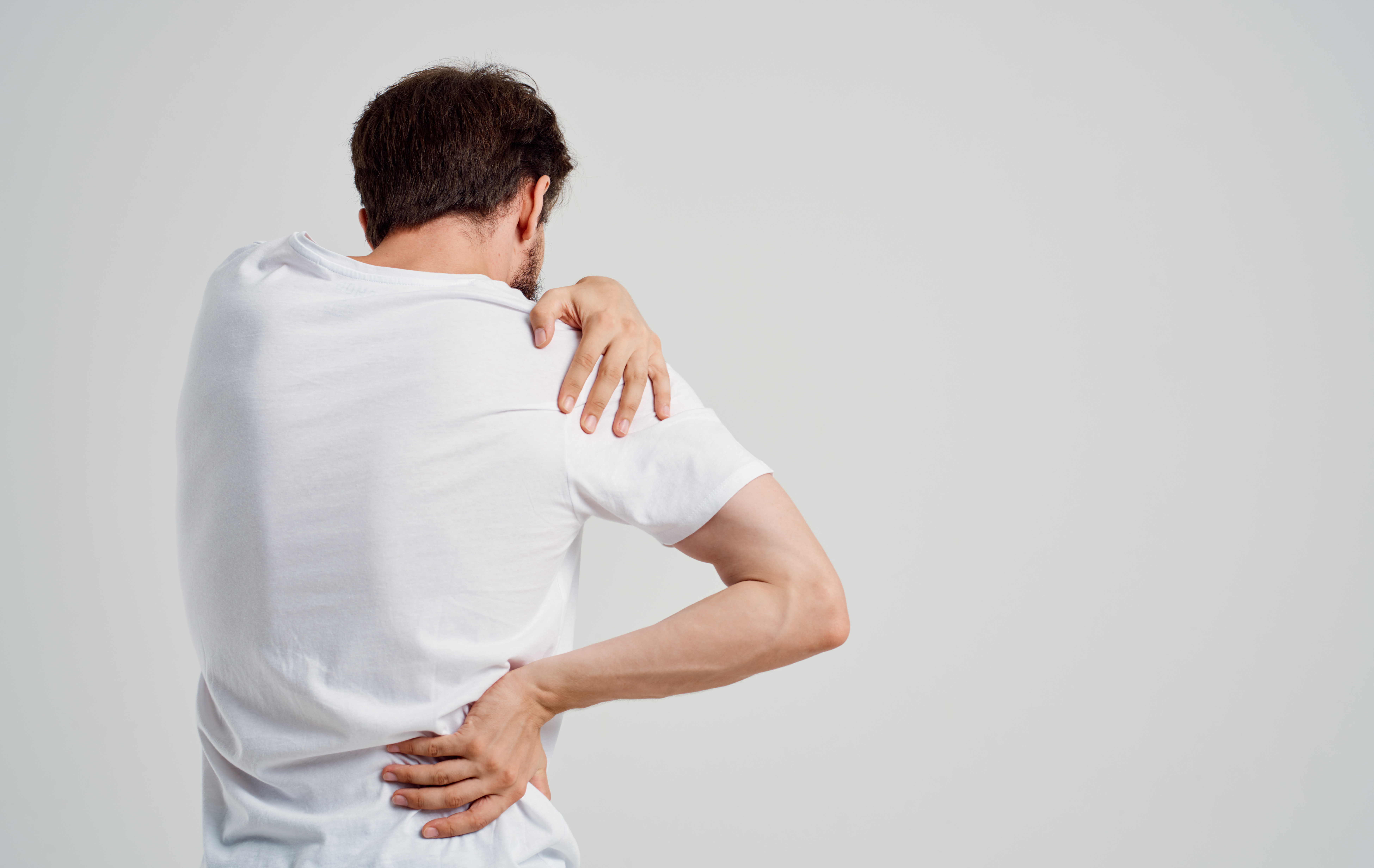

Have you ever experienced pain from straining a muscle?
If the answer is yes, you’re not alone! Muscle injuries account for approximately 30% of injuries seen in sports medicine clinics.[1] Typically, these injuries recover well particularly with a tailored rehabilitation program.
But the question remains: can you manage the muscle strain at home? If you have already consulted Dr Google, you probably found contradictory information and may not be sure what to do next. Let’s help by clarifying what a muscle injury is and then outline what can be done to treat the muscle injury properly.
Identify the injury

First, let’s identify the most common acute injuries to skeletal muscles – these include strains, contusions, delayed onset muscle soreness (DOMS) and complete ruptures.[1] These kinds of injuries can be quite painful and lead to time lost in sport and from work as well. However, given skeletal muscles have an excellent blood supply, they can heal really well and, with appropriate management, you should be able to return to your previous level of sport or work.[2] There is a lot of information on the web, including some great videos on YouTube, but not all injuries are the same and this means not all injuries can be treated the same! It’s really important you identify what specific muscle injury you have so you know what the most appropriate treatment is – if you’re not sure, then this is a good reason to get advice from your physio.
Do I need a physio or can I treat my muscle injury at home?
Depending on the severity of the injury, there is a lot you can do to help treat your muscle injury at home. Treating your injury at home, following the RICE principles, is a great starting point for treating your acute muscle strain:[3]
- Rest from aggravating or painful tasks (e.g., for lower limb muscle injuries, you may need crutches to help take the load off)
- Ice 20minutes on and 40minutes off for the first couple of days can be really helpful
- Compression using a bandage (but ensure it’s not so tight that you lose circulation or feel pins and/or needles)
- Elevation above your heart level
A common misconception is that you should immobilise or not move after a muscle injury. However, after following the RICE principles, it’s important to ensure that you continue to use the muscle and move (in a pain-free way). Having said that, the balance between moving and off-loading an injured muscle can be a fine balance – if you are not sure about how much to move vs rest, speak to your local physio. It’s also during this early phase that patients sometimes ask “Should I be stretching my muscle?” Initially, this is a big NO. Despite the fact the muscle may feel tight after an injury, it’s important to allow time for the muscle fibres to heal before you start stretching the muscle.

Whilst some mild muscle injuries can be managed at home, if you are struggling to get around, or the injury is affecting your ability to work for more than a couple of days, then getting a proper assessment will help get you back on track faster.
When to seek the advice of a physiotherapist
Unsure how to manage at home: If you feel a little lost about managing and/or treating your muscle injury at home, check in with your local Allsports Physiotherapy Clinic. Your local physio will be able to help with your questions and concerns.
Injury severity: Depending on how severe the injury is, it could recover in a few days at home or it could take up to a few months to fully recover. If you are unable to RICE, or if you are still experiencing pain after a few days, you should seek the advice of your physio.

Long-term recovery: After you are moving pain free, strengthening the injured muscle tissue is pivotal to its long-term recovery. For example, if you strain your calf muscle then performing calf raises (pain-free) is an important exercise to do at the appropriate point in the injury recovery. These strengthening exercises should be gradually increased to a level that is suitable for your return to work, sport or gym.
Contact your local Allsports physios – we can help you get on the road to recovery!
References
[1] Garrett WE. Muscle Strain Injuries. The American Journal of Sports Medicine. 1996;24(6_suppl):S2-S8. doi:10.1177/036354659602406S02
[2] Erickson, Lauren & Sherry, Marc. (2017). Rehabilitation and return to sport after hamstring strain injury. Journal of Sport and Health Science.
[3] Bekerom MP, Struijs PA, Blankevoort L, Welling L, van Dijk CN, Kerkhoffs GM. What is the evidence for rest, ice, compression, and elevation therapy in the treatment of ankle sprains in adults?. J Athl Train. 2012;47(4):435-443. doi:10.4085/1062-6050-47.4.14
